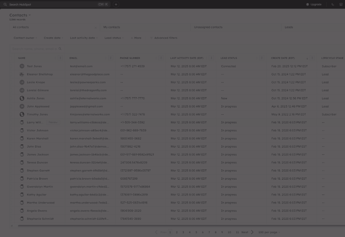If you do any form of client work, you've probably encountered bugs and scope creep. The line between the two can sometimes blur, leading to difficult client conversations.
Either could result in you performing extra work without additional resources or your client paying for something they believe should be included free. Nobody is happy in either case.
This article will address bug fixes vs scope creep and how to manage them effectively so you don't have to stress over them again.
What are Bug Fixes?
A bug fix is an alteration to a system or product that solves a programming error. Many programming defects that cause system implementation errors may demand specific bug fixes a development or other IT team might need to handle.
A bug is a broad term that can refer to various functionality and style issues. As a developer, you may have a more technical definition for "bugs," but clients will typically refer to any of the above, and more, as "bugs."
What is Scope Creep?
The scope is the work that needs to be completed in a project. Managing scope is a crucial aspect of a project manager's job, especially as the project progresses and scope creep starts to appear. This raises the question: What is scope creep?
Scope creep, also known as "requirement creep" or "feature creep," refers to how a project's requirements tend to grow over time (typically without approval), such as when a single deliverable becomes five; when a product with three key features soon has 10; or when the client's demands change halfway through a project, prompting a reevaluation of the project requirements. Scope creep is commonly caused by shifting needs from key project stakeholders, unclear internal communications, and disagreements.
Changes are inevitable in projects, meaning scope creep is always possible. Perhaps this is why controlling scope creep is so difficult.
This doesn't mean, however, that more functionality or labor on a project is always a bad thing. And scope creep doesn't occur solely due to changing needs. But the most important factor is whether or not the adjustments are permitted. In other words, scope creep does not occur when a scope expansion is granted.
How are Bug Fixes Different from Scope Creep?
Scope creep refers to additional requirements that crop up throughout a project, typically outside of the determined work plan. On the other hand, bug fixes refer to fixes on project defects that emerge during the course of a project or after its completion.
How does Scope Creep Impact Your Project?
Widening scope increases the amount of work to be done, effectively raising costs or requiring other aspects of the project to be deprioritized. As a result, project timelines are extended, additional staffing is required, and product quality takes a hit. Some of the most common challenges include:
- Resource constraints: As the scope widens, the instinct is to throw more resources at it, resulting in significant resource constraints, affecting other projects across the company. As the amount of resources expands, so does overhead; consequently, productivity suffers.
- Turnover: Burnout and turnover are the next downstream effects of rapidly expanding projects. Turnover is a well-documented cost. Depending on the timing, it may not be completely obvious in a project budget, but it is a direct outcome nonetheless.
- PR implications: Finally, a failed project impacts public relations. Scope creep can result in public relations problems, broken client relationships, and low customer satisfaction. As word of the problems spreads, sour client relationships and low customer satisfaction may influence future business.
How Do Bug Fixes Impact Your project?
Understanding the ramifications of a bug may demand collaboration across teams. While this investigation may increase the project's timeline, clients will be more satisfied when they have a complete product. Bug fixes aren't always as simple as changing some code, however. They are also about maintaining relationships with the individuals affected by the code.
How to avoid scope creep
Preventing scope creep is the best way to ensure your project stays on track. Follow these tips to avoid scope creep:
Clearly define requirements
Communicate with project stakeholders to understand the overall expectations. If there are disagreements, take the time to reach a consensus before starting the project. If you can't agree, see if the issue has to be prioritized within the project scope, and if it isn't vital to the overall project, leave it out. All agreed-upon expectations must be explicitly documented and used as groundwork for project planning.
Change Control Process
Set up a change control process that everyone can agree on. If a change is suggested over the course of a project, there needs to be a protocol for review, approval, and implementation.
Scheduling
Consult your general requirements when scheduling project tasks. This will ensure all expectations are met and your project progresses. Consider possible modifications as the project continues and be sure to allow yourself some flexibility.
How to Avoid Bug Fixes
Take the following steps to avoid bug fixes:
Communicate clear and adequate requirements
Your developers will need complete and fully understood requirements to stay occupied throughout the development cycle. A developer who is left with inadequate requirements will frequently perform work that will need to be redone—or undone—later on.
Integrate Code Reviews
Consider the need to invest more in code reviews during the development process. Ensure team members, regardless of their degree of experience, regularly evaluate code for one another. It may appear to be a waste of time, but this small investment will save you in the long run. Reviewing code up front can help your team identify potential issues before wasting time coding against best practices and having to fix it later.
Scale Your Business with Eternal Works
If you've read this far, you should now understand the difference between bug fixes and scope creep, as well as how to handle each of them effectively—including how to avoid both when possible.
If you require more information on scope creep and bug fixes, reach out to us today. We are ready to help you scale your leads and sales. From lead management and customer acquisition to ROI, we have you covered.



